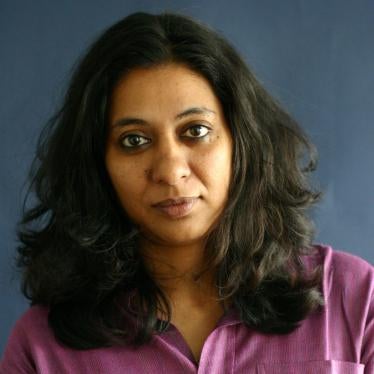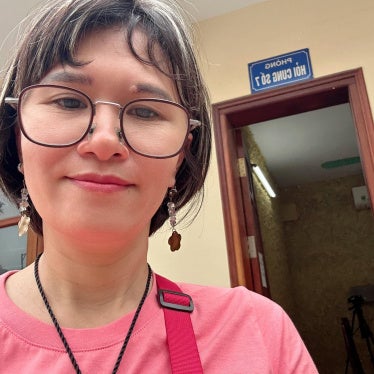ON JANUARY 22, the Sri Lankan Navy intercepted an Indian fishing boat from Tamil Nadu. Two fishermen jumped into the sea, but 28year-old Jayakumar stayed on his boat. The two survivors told the authorities that a Sri Lankan Navy official climbed into the boat and tied a rope around Jayakumar's neck. Then the naval vessel dragged the fisherman through the water, strangling him. Ten days earlier, Sri Lankan Navy personnel reportedly fired on an Indian fishing boat, killing a fisherman and wounding two others.
As protests erupted in Tamil Nadu, India's external affairs minister S.M. Krishna said such incidents were "unacceptable", while the government issued a statement expressing "strong and unequivocal condemnation of this violent incident".
Colombo denied the incident, and a Navy spokesman declared that the "allegations are baseless and without proof." To those who follow the human rights situation in Sri Lanka, its response was unsurprising. It routinely issues knee-jerk denials to allegations of abuses by its armed forces, no matter how compelling the evidence.
During its 2008-2009 military campaign against the separatist Liberation Tigers of Tamil Eelam, the government engaged in repeated denials.
It deliberately misled the rest of the world, contradicting UN estimates on the number of civilians in the conflict zone, playing down the danger. The government only admitted over 300,000 non-combatants were there, while at the conflict's end it boasted of a dramatic "rescue" of civilians. Worse, despite evidence from satellite imagery and testimony from people on the ground, Sri Lanka repeatedly and robustly denied using heavy artillery in its "no-fire zone" in which civilians would be safe from the fighting. Many died. The government then proceeded to detain survivors in military-run camps, describing them as "welfare villages".
Last August, the US state department reported that Sri Lanka had failed to conduct an effective investigation into laws-of-war violations by government forces and the LTTE in the final months of the war, which ended in May 2009.
This followed an October 2009 report prepared by the Office of War Crimes Issues documenting violations of the laws of war. Sri Lanka responded by contending it was an effort "to bring the Government of Sri Lanka into disrepute, through fabricated allegations and concocted stories", when the government forces were in fact "engaged in a humanitarian mission".
The government's response was no better to horrific videotapes that allegedly show Sri Lankan soldiers executing prisoners in cold blood. When Britain's Channel Four News first broadcast a video, showing Sri Lankan troops executing two captives, the government said experts it had commissioned found the video to be fabricated.
Philip Alston, the United Nations special rapporteur on extrajudicial, summary, or arbitrary executions, commissioned a separate group of independent experts, who found strong evidence to suggest the video was authentic.
Human Rights Watch obtained photographs and video footage of the same incident from other sources, which show what appear to be the summary execution of prisoners by government troops.
One of about a dozen bodies visible, most of them bound and blindfolded, was identified as Isaippiriya, a 27-year-old woman reporter for the LTTE. A Sri Lankan defence ministry website lists a Lt. Col. Issei Piriya as an LTTE leader killed on May 18, 2009 by the 53rd Division, thus linking the Army to the alleged summary execution of prisoners.
The Sri Lankan government, however, said that the video is fake.
Human Rights Watch has examined more than 200 photos taken on the front lines in early 2009 by soldiers. Among these are a series of five photos showing a man identified as a long-term member of the LTTE's political wing.
The first two show him alive, with blood on his face and torso, tied to a palm tree. He is surrounded by several men wearing military fatigues. In the next three photos, the man is lying - apparently dead - against a rock. While Human Rights Watch cannot conclusively determine that he was summarily executed in custody, a full investigation is warranted.
Photos also show what appear to be dead women in LTTE uniforms with their shirts pulled up and their pants pulled down, raising concerns that they might have been sexually abused or their corpses mutilated.
Faced with credible allegations of violations of the laws of war, the government has insisted on only pointing to abuses by the Tamil Tigers.
In his speech in September at the UN General Assembly, President Mahinda Rajapakse said: "Over the past year, much has been reported and much has been said regarding my country's liberation from terrorism.
However, far less has been said of the suffering we had to undergo and the true nature of the enemy we have overcome." No one, least of all human rights defenders, will question that the Sri Lankan government faced a terrible challenge from the Tamil Tigers with their penchant for suicide bombings, recruiting children into combat, or using civilians as human shields. Human Rights Watch and others documented and condemned all of this. At the war's end, Mr Rajapakse promised UN Secretary-General Ban Kimoon that his government would investigate wartime abuses by both the LTTE and the Sri Lankan military.
But it's clear the government has no intention of doing so. Instead, it has followed the practice of its predecessors of creating commissions or inquiries to give the appearance of taking action, without ever really doing anything. Since independence in 1948, Sri Lanka has established at
least nine such commissions and numerous other inquiries, none of which have produced any significant results. There is no reason to believe that its new commission will be any different.
Last year, Mr Ban Kimoon appointed a panel of experts to address accountability issues relating to alleged violations of international human rights and humanitarian law during the final stages of the conflict.
The government's response was predictable - it publicly denounced the new panel, and a senior minister led a protest outside the UN offices in Colombo.
The government has toned down its rhetoric but has not cooperated with the panel.
Undeterred, the panel will submit its report to the Secretary-General in March.
India should take the lead in demanding that the full report of the panel be made public and, as warranted, encourage the SecretaryGeneral to implement its recommendations.
The brutal attacks on fishermen who stray into Sri Lankan waters has given ordinary Indians a brief glimpse of the lack of accountability of Sri Lanka's security forces, and the unresponsiveness of the Rajapakse government to serious abuses. The Indian government was right to condemn the murder of its own citizens, and demand an investigation. But it also should ensure justice for Sri Lankan victims. When the UN panel of experts submits its report next month, it will be important to have the Indian government standing behind them.
Meenakshi Ganguly is the South Asia director in the Asia Division of Human Rights Watch.









